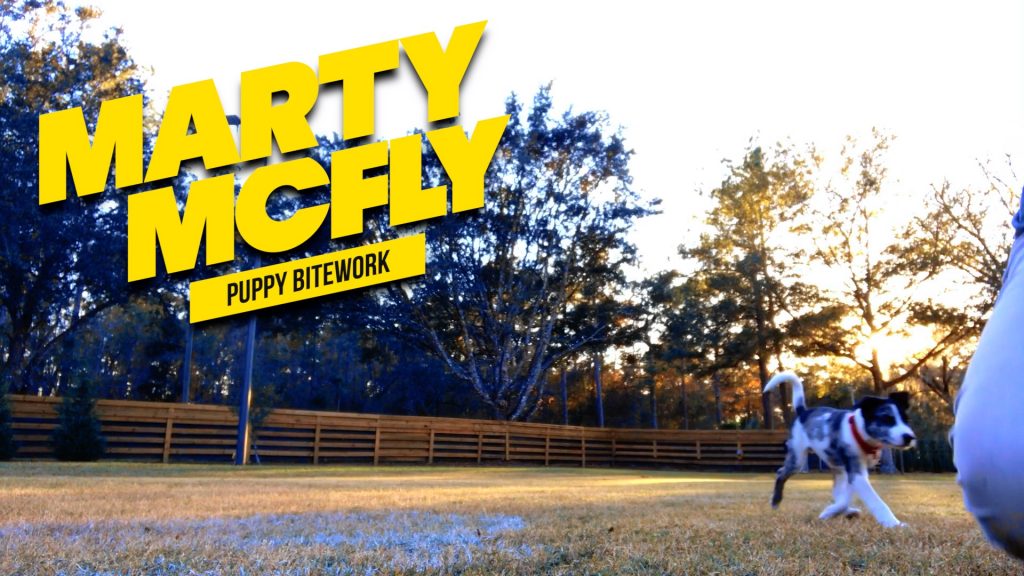
Marty McFly Disc Dog Puppy Jam
Let’s go Back to the Future with Apryl Lea & Marty McFly from 2017. In one of Marty’s first field jams, Apryl and the young man work on staying engaged and freeshaping the Drop.
Multiple Criteria
- Reorientation
- Bite
- Drop
- Hand
Having multiple criteria for working with a puppy, young dog, or dog that has trouble with engagement is really important. In this session Apryl is utilizing multiple criteria as tools that allow for more opportunities to shape and capture engagement and to provide reinforcement on the Drop.
Reorientation
Reorientation from the environment is a critical criteria for engagement and for puppy work. The hardest part of engagement or reengagement is the initial release of the environment. This initial reorientation is not visible on this video as Marty is off camera, but Apryl is marking the moment that Marty looks or turns towards her. This immediate timing on the reorientation is key to shaping engagement and reinforcing the initial release of the environment which is the most difficult part of the engagement process.
Cued Bite
The cued Bite is a huge criteria that can be both a target behavior, reinforcer, and a useful tool for creating a high rate of reinforcement in a training session. Normally, this criteria is a target behavior and is often THE target behavior – in a sense, that is THE target behavior here, but alone it is NOT enough to keep this young dog engaged. In this session the cued Bite becomes just another criteria we can use to keep up the rate of reinforcement and maintain engagement.
Freeshaped Drop
The Drop in this session are freeshaped, meaning that they are not cued. This is the very first step of our standard Drop work. Freeshaping the Drop is a very temporary technique for constructing a cued Drop, as prolonged use can lead to real trouble. While Freeshaping the Drop, pay attention to where and when it happens so you are prepared for Step 2 of Installing the Drop: Predicting and Cuing.
Hand
Putting the disc into the hand is an additional criteria that is used in this session, and the hand behavior can be initiated by either the dog or the handler. The “hand” behavior resembles both the Bite and the Give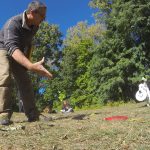 The Give is a retrieve to the hand. A cued Give is a foundational skill that is not super useful in the actual performance of disc dog freestyle, and has huge applications for... More and can be used to initiate the Tug.
The Give is a retrieve to the hand. A cued Give is a foundational skill that is not super useful in the actual performance of disc dog freestyle, and has huge applications for... More and can be used to initiate the Tug.
Each of these criteria, on their own are bonafide important criteria, but used in concert as target criteria, provide multiple opportunities for engagement.
Multiple Reinforcement
- Handler Movement
- Bite
- Roller
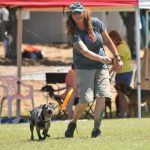 The Roller is a great throw for reinforcing a dog with a disc. Instead of flying through the air like a wing, the Roller rolls on the ground like a wheel; a fast,... More
The Roller is a great throw for reinforcing a dog with a disc. Instead of flying through the air like a wing, the Roller rolls on the ground like a wheel; a fast,... More - Near Miss
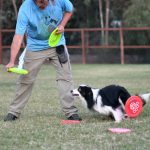 A Near Miss, almost a catch, is a tremendous motivator. It activates the same centers of the brain and has the same neuro-chemical response as success or a jackpot. Most handlers squander this... More
A Near Miss, almost a catch, is a tremendous motivator. It activates the same centers of the brain and has the same neuro-chemical response as success or a jackpot. Most handlers squander this... More
Multiple reinforcers is a terrific plan of action for young dogs as well. Puppies get bored pretty easily, and it is often not obvious what type of reinforcer the puppy will like on this particular day. Apryl employed multiple reinforcers in this session to keep Marty engaged and to keep the flow of the game going.
Handler Movement
Apryl uses handler movement as a cookie several times in this session. Handler movement is a great reinforcer for reorientation to the handler. It is a good tool to draw the dog in and set up a Give, Drop, or Bite.
Bite
Apryl uses the bite a little bit in this session. The Bite may or may not be transitioned into a tug depending on the situation.
Roller
The Roller is used a few times as well. It’s a great cookie for reorientation, although the reinforcement happens away from the handler. Use it carefully if your puppy is likely to check out while further away from. A Roller can also be used to manufacture an approach which can be useful.
Near Miss
The Near Miss of a cued Bite is a terrific reinforcer for a puppy. You just really want to make sure that you keep the misses playful and close to success. Playful teasing into near misses can build resilience and desire to seal the deal with a catch or bite.





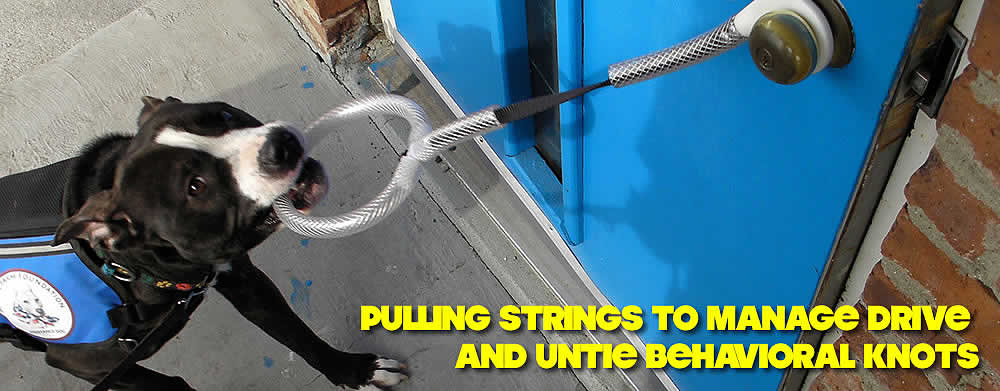
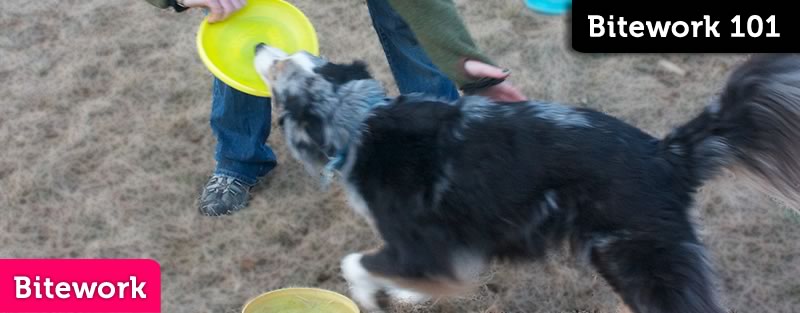
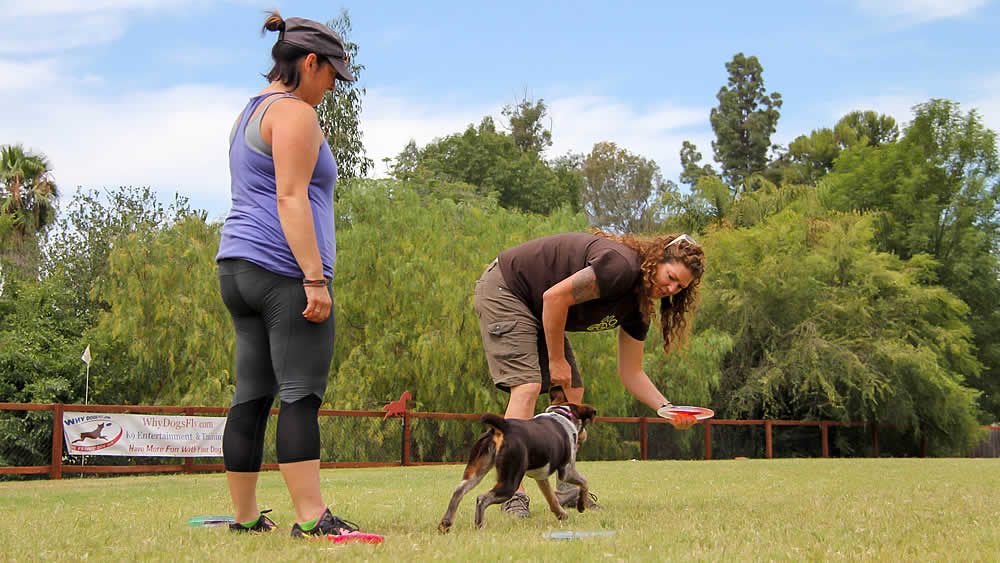
Responses